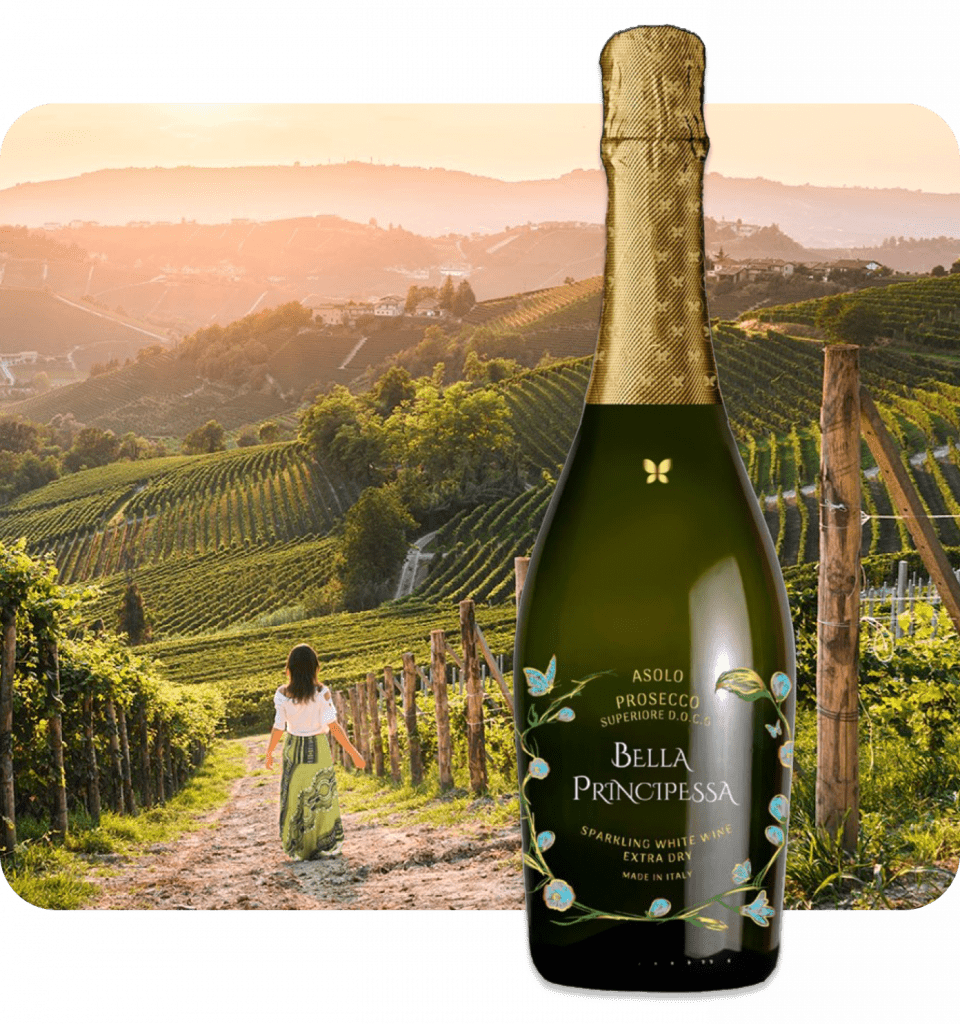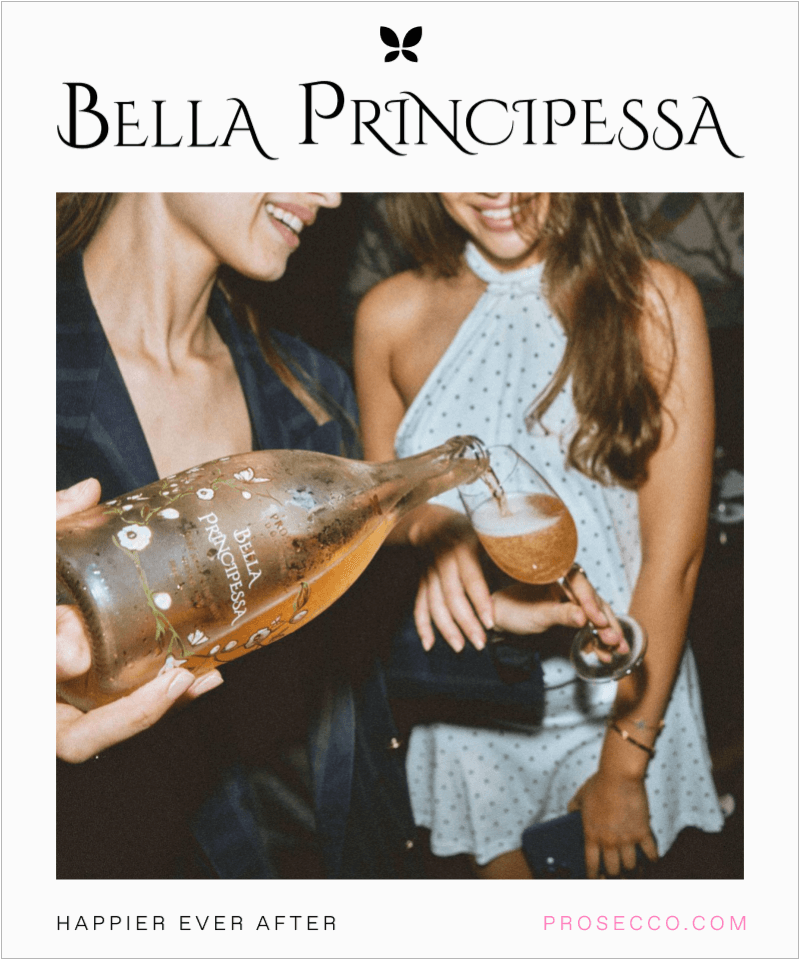Hello, dear readers!
As an industry insider with years of experience in wine and marketing, I’ve been privy to the growing chatter and fervent debates among wine aficionados, environmentalists, and fellow insiders. The pivotal question that intertwines our treasured tradition with our environmental responsibilities has been echoing through vineyards and wineries: Is it time for the Prosecco industry to bid adieu to conventional glass bottles and welcome the era of sustainable packaging?
Here’s the catch – the answer isn’t as simple as you might think. The very essence of Prosecco, from its effervescent charm to its unique taste profile, is tied to the type of packaging it uses.
Join me as we uncork this issue, leveraging my industry insights to explore the complexities of this debate. Whether you’re a stalwart supporter of the classic glass or a curious advocate for the can, get comfortable and join us as we explore the heated discussion about the future of Prosecco packaging.
Tradition and Quality Meet in Glass Bottles
Prosecco, like many wines, has traditionally been stored in glass bottles. But it’s not just about aesthetics or tradition. Italian regulatory bodies Prosecco DOC and DOCG consortiums mandate that Prosecco be labeled and sold in glass bottles. This guarantees authenticity and quality, distinguishing it from other sparkling wines.
Prosecco’s glass bottle provides an excellent barrier against oxygen, which can degrade wine over time. Furthermore, it doesn’t interact with the wine, preventing any potential chemical leaching or alteration of the wine’s taste.
But there’s more.
With its exuberant sparkle, Prosecco operates under a substantial carbonation level, typically between 3-4 bars of atmospheric pressure. This heightened effervescence not only lends to its delightful taste and experience but also necessitates specialized containment. As such, with its robust structure and impermeability, only a pressurized glass bottle can safely and effectively store this lively Italian bubbly.
Unfortunately, alternative packaging solutions fall short in this regard, unable to withstand the high-pressure demands of Prosecco’s vibrant character.

The Sustainability Factor: Balancing CO2 Emissions and Packaging Challenges
A report suggests that glass bottles contribute 40% of the wine industry’s CO2 emissions, while alternatives like aluminum cans could reduce emissions by about 3% annually in the Veneto region. However, the accuracy of the data remains unverified.
But here’s the challenge: finding a lightweight packaging option that can handle the high pressure of Prosecco and Champagne sparkling wine is still elusive.
Aluminum cans and other alternatives cannot withstand this pressure, making glass bottles indispensable for preserving Prosecco’s quality and character.
Decoding Fizz: Atmospheric Pressure in Your Sparkling Wine
Sparkling wines tantalize our palate and titillate our taste buds. However, did you know that the level of fizz in your flute is determined by a delicate dance of atmospheres that directly influences the taste, texture, and overall experience of your effervescent delight?
The following estimations are approximate and vary depending on winemaking techniques, grape varieties, and the duration of the second fermentation. So, the next time you indulge in a glass of sparkling wine, take a moment to appreciate the lively atmospheric pressure that contributes to your bubbly experience!
Champagne: A Luxurious Legacy from King Louis XIV (5 to 6 Bars)
Universally seen as the height of elegance and luxury, Champagne first sparkled in the grand courts of France’s Sun King, Louis XIV, known for his lavish tastes.
The effervescent character of Champagne, characterized by about 5-6 atmospheres of pressure, is the highest among sparkling wines. This forms the signature tiny, tenacious bubbles that ascend like a string of pearls in your glass, orchestrating an exquisite symphony of taste and texture. This high-class bubbly spectacle has made Champagne synonymous with celebrations, success, and the good life for centuries.
Prosecco The Italian Maestro (3 to 4 Bars)
Prosecco orchestrates a unique symphony of bubbles with a slightly lower carbonation level of about 3-4 atmospheres. This results in a grand spectacle of fine, frothy bubbles that pirouette in your glass, crafting a vivacious and joyful effervescence. Prosecco bubbles, subtle sparkle, and enchanting dance captivate the senses, making each sip a celebration of its own, embodying the very spirit of La Dolce Vita.
Today, Prosecco is the world’s most popular sparkling wine, outselling its French counterpart, Champagne, by more than two to one.
This soaring popularity of this Italian charmer can be attributed to its delightful balance of taste, affordability, and versatility. Prosecco offers a lighter, fruitier alternative to the rich intensity of Champagne, making it a preferred choice for many occasions.
Its relative affordability broadens its appeal, inviting everyone to enjoy the sparkling delight.
Furthermore, Prosecco’s adaptability in cocktails and culinary applications has further fuelled its worldwide acclaim.
Frizzante: A Whisper of Fizz (1 to 2.5 Bars)
Playing in subtlety, Frizzante, Italy’s semi-sparkling wine, dances in the realm of delicacy. With carbonation levels typically between 1 and 2.5 atmospheres of pressure, Frizzante offers a gentle fizz, a tender tickle on your tongue, creating a more serene sparkling experience.
The restrained effervescence of Frizzante wine makes it the ideal candidate for alternative packaging like aluminum cans, which cannot withstand the carbonation pressure of more than 2.5 atmospheres.
Weighing the Environmental Impact
While glass bottles excel in preserving Prosecco’s taste and quality, they’re not the most eco-friendly option. Glass bottles, being heavier than alternatives like cans or plastic, cost more and have a higher environmental impact during transport. Additionally, the process of recycling glass is energy-intensive.
Some argue that alternative packaging, like aluminum cans, may have a lower environmental impact. However, as mentioned earlier, alternative packaging cannot handle Prosecco’s carbonation levels, meaning that the wine would need to be less carbonated to be packaged this way. This would alter the taste profile, creating a different product, like a frizzante with a significantly lower carbonation level.
Embracing the Future
As consumer consciousness about environmental impact grows, the Prosecco sector faces a unique challenge. How can they adapt and innovate to meet these demands without compromising the quality and character that make Prosecco unique?
This is a question that doesn’t have an easy answer. Any shift towards more sustainable practices needs to consider these aspects carefully. Yet, the wine industry stands at the cusp of potentially transformative changes.
Arguments FOR using glass bottles for Prosecco
Legal Requirements
Prosecco DOC and DOCG consortiums mandate that Prosecco be labeled and sold in glass bottles. This rule safeguards its authenticity and quality and distinguishes it from other sparkling wines.
Tradition
Storing Prosecco in glass bottles isn’t just about convention; it’s about the presentation and the quality signal it sends.
Preservation and Quality
Glass offers an excellent barrier against oxygen, which can degrade wine over time. Moreover, glass doesn’t interact with the wine, eliminating any potential chemical leaching or alteration of the wine’s taste.
Temperature Control
Glass excels at maintaining a steady temperature, a crucial factor for the storage and taste of wine.
Recyclability
Glass bottles are fully recyclable, making them a sustainable choice in their own right.
Arguments AGAINST using glass bottles for Prosecco
Technical Considerations: Preserving Prosecco’s Sparkle
Prosecco’s effervescent charm demands sturdy glass bottles. Sustainable alternatives fall flat under pressure, underscoring the vital role of glass in preserving Prosecco’s quality, character, and taste. Remember: If it’s labeled Prosecco on a can, it’s not the real fizz.
Weight and Transport
Glass bottles are heavier than alternatives like cans or plastic, making them more expensive and environmentally impactful to transport.
Fragility
Glass is susceptible to breakage, leading to potential product loss and safety hazards.
Cost
Glass bottle production and shipping costs can increase the product’s final cost.
Accessibility
Glass is often prohibited in outdoor venues or events due to safety concerns. Alternative packaging could allow Prosecco to be enjoyed in these settings.
Sustainable Packaging
Glass is recyclable but energy-intensive, while some argue for aluminum cans as a more eco-friendly alternative. The shift to cans is underway, with brands like Bella Vino leading the charge.

Prosecco DOC’s Sustainable Success and Protective Regulations
The Prosecco DOC consortium achieved a remarkable 25% increase in bottling, producing 627.5 million bottles, including 71.5 million Prosecco DOC Rosé in 2021.
President Stefano Zanette and Director Luca Giavi have been strong advocates for sustainability since 2012, securing the success of their denomination while planning for the future, as reflected in their “Prosecco DOC Agenda 2030.”
Through authentication labels, the consortium’s regulations protect Prosecco’s quality, authenticity, and reputation. These regulations align with the Champagne precedent, where the name can only be used for sparkling wines in glass bottles, preserving their integrity and quality.

Implications for Various Stakeholders
Consumers
The potential shift towards more environmentally friendly packaging options in Prosecco can provide consumers with greener choices when purchasing their favorite sparkling wine.
Retailers
The growing popularity of eco-friendly and convenient packaging options may increase demand for Prosecco in retail stores. Retailers may need to diversify their product offerings to include a broader range of packaging options to meet consumer preferences.
Prosecco Wine Makers
Adopting alternative packaging would require Prosecco producers to change their production processes. While initial costs may be involved, embracing sustainable packaging could open new markets and stimulate demand. However, Prosecco producers must carefully consider the potential benefits against the risk of compromising the category and violating existing regulations.
Conclusion: Prosecco’s Sustainable Packaging Dilemma
The Prosecco packaging debate is a fascinating puzzle in which tradition and sustainability intertwine without easy answers. The regulations of the Prosecco DOC and DOCG consortiums stand as guardians, preserving the authenticity, quality, and reputation of this beloved bubbly.
Prosecco’s bubbly personality presents a thrilling challenge, demanding packaging that can withstand its lively 3-4 bars of pressure. While cans and boxes fall short of sustainability, the industry is thirsty for ingenious solutions.
In the face of growing environmental consciousness, the Prosecco industry finds itself at a thrilling crossroads. Innovation must dance hand in hand with the essence of Prosecco, preserving its unique sparkles and charms.
Hold onto your glasses, for we stand on the edge of a thrilling transformation that will shape the future of Prosecco and ripple through the wine industry. But be warned, the road to progress in the region may twist and turn as change takes its own sweet time.











